Нaghartsin monastery: the "Voice of god" is heard here
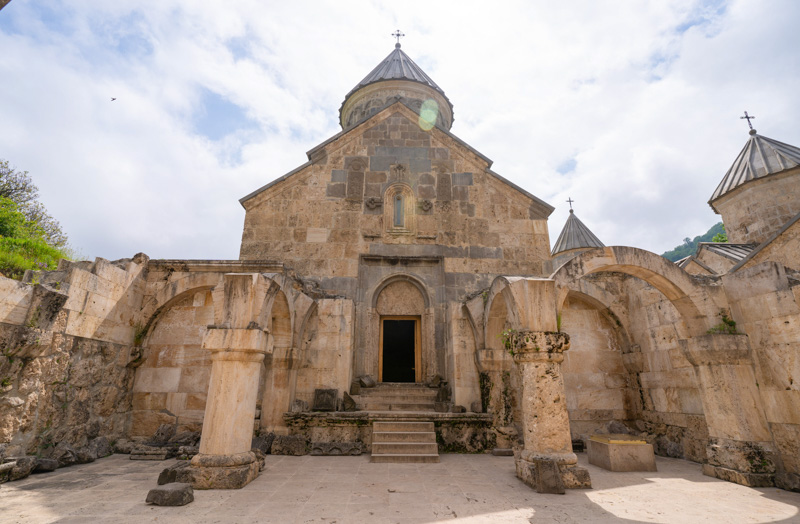
A 15-minute drive from Dilijan is one of the main attractions of Tavush and the whole of Armenia - the monastery complex of Haghartsin. It is an example of the perfect harmony of nature and architecture. In the valley, the Haghartsin stream flows from the south side, and Metz Ahpur flows from the east. Surrounded by wooded mountains, the white-stone structures of the temple seem to glow and hover over the surrounding landscape. The energy and beauty of this place attract a lot of tourists.
The history of the monastery
Information about this architectural masterpiece remained from the medieval Armenian historian Kirakos Gandzaketsi (1200-1271), who described it as a scientific, educational and cultural center of the past. The monastery was built during Medieval Armenia (9th-11th centuries), which was ruled by kings from the Bagratid dynasty. Originally it was the summer residence of the tsars, two of whom are buried here - tombstones of Smbat and Gagik Bagratuni (10th - 11th centuries) with engraved names have been preserved at the southern wall of the church of St. Grigor. Medieval strife, earthquakes, invasions of the Seljuk Turks - the walls of this temple saw a lot. The complex was restored in the 12th century by order of the Georgian tsar George III and the Armenian princes of the Zakarian family. The grave of another important figure - Khachatur Taronatsi - the abbot of the monastery, a prominent church figure, scientist, poet and musician is located in Haghartsin. In the 12th - 13th centuries, the monastery reached the apogee of its development, the first music university (conservatory) in Armenia was opened here.
The legend of the origin of the name of the monastery
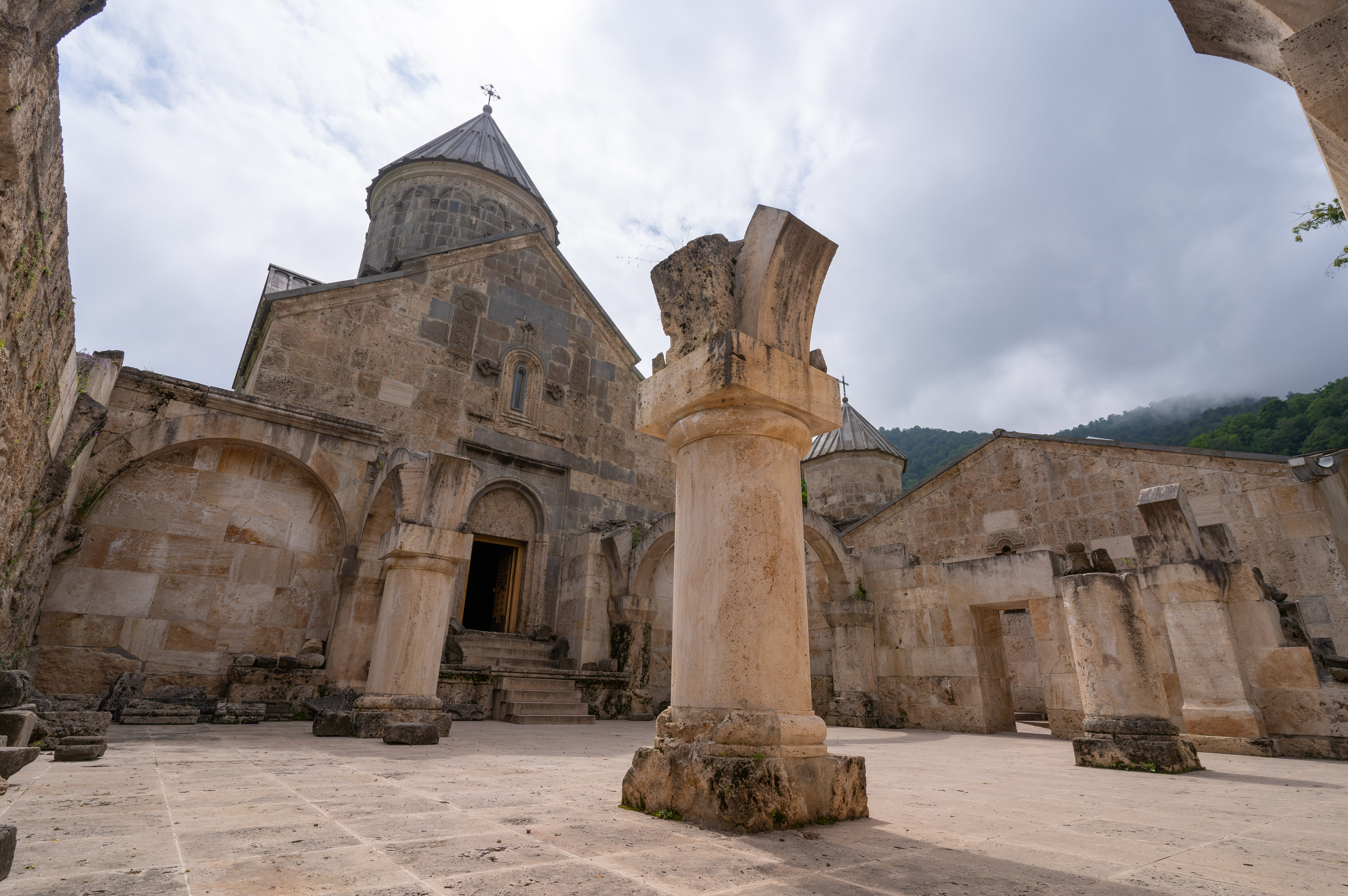
Every stone in Haghartsin is imbued with history and legends. One of them is connected with the name of the monastery. According to popular legend, when the churches of St. Grigor and St. Astvatsatsin already stood in the monastery complex, priests lived here. Every day the priests watched a lot of eagles fly to the domes of churches and play with each other. Thus, the name of the monastery complex is formed by the combination of two words: the ancient Armenian "hagh" (game) and "artsiv" (eagle) - "Haghartsin". Another variation of the legend tells that an eagle was seen above the dome of the main church during the opening ceremony and consecration of the monastery. The image of an eagle can be found on the walls of Haghartsin. For example, on the facade of the church of St. Astvatsatsin, the eagle is depicted sitting on the dome of the church.
The main objects of the monastery complex
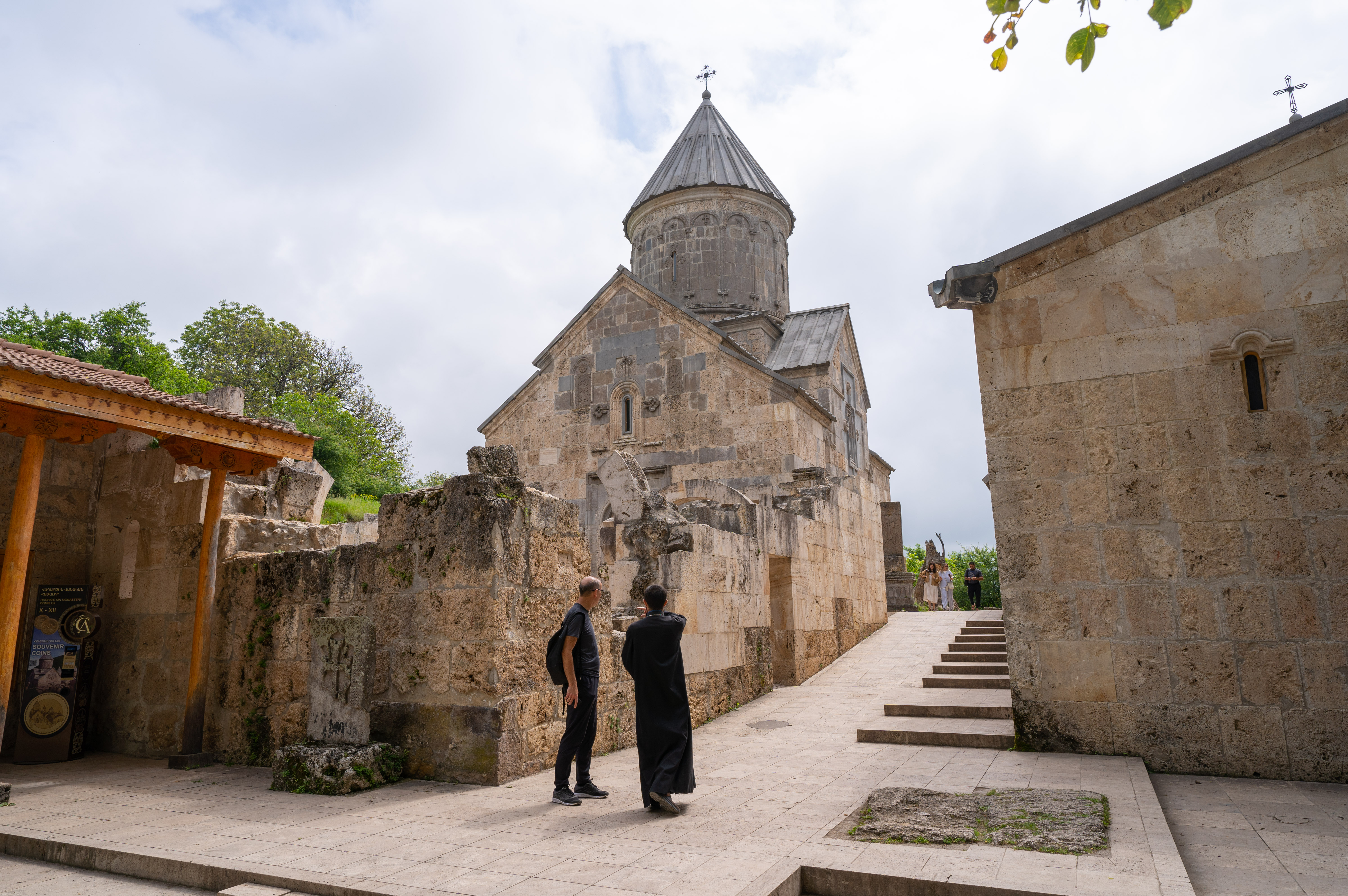
cruciform on the inside, there are four chapels in the corners. The church is crowned with a dome on an octagonal drum. The largest and main building of the complex is the Church of St. Astvatsatsin built in 1281. Its majestic 16-sided dome attracts the eye and creates the illusion of weightlessness. On the wall of the church you can find a relief depicting two men in monastic robes, pointing to the church depicted between them. It depicts the founders of the church, Abbot Khachatur Taronatsi and his assistant. The third church, St. Stepanos, was built in 1244 and resembles a smaller copy of the main church. The largest refectory in the country is located on the territory of the temple — one of the best architectural compositions of medieval Armenia. According to the inscription found on the wall, it was built in 1248 by the architect Minas. In the refectory of Haghartsin, you can immerse yourself in the Middle Ages - here everyone eats at wooden tables and sits on chairs made on the model of those used in the 13th century. Today, the refectory is used as a location for various events.
On the territory of the monastery complex there are also a chapel of the 13th century, the tomb of the Bagratid royal family of the 12th century, which we mentioned above, and a number of other places intended for religious mass of the 12th - 13th century.
Several khachkars, symbols of medieval Armenian art, have been preserved on the territory of the monastery complex. Khachkars are crosses carved on stones. The most amazing khachkar in Haghartsin is located at the back of the complex. This khachkar is unique because it depicts an "infinite cross" - it is not interrupted anywhere, thus forming a double cross. According to legend, it was carved in the 13th century by orphans who lived in the monastery. Take a closer look at it and appreciate what a delicate and meticulous work was done 800 years ago.
Another unusual object on the territory of the monastery complex is an oak tree planted by princes from the Zakarian family - which means that it is almost as old as a monastery! Of course, only a part of it has been preserved at the moment, but the tree stands as a monument to perseverance through the centuries.
On the territory of Haghartsin, you can see the traditional Armenian sundial, which was used by many monasteries in the Middle Ages. This was placed in the south of the monastery. With the help of a sundial in the past, people learned the time of mass. The letters of the Armenian alphabet were used as numbers on the Armenian clock. Of course, such a sundial is impractical, since it cannot be used when the sun sets or the weather is cloudy, but it has become an integral part and decoration of Armenian architecture.
Haghartsin today: how the temple charmed the arab sheikh
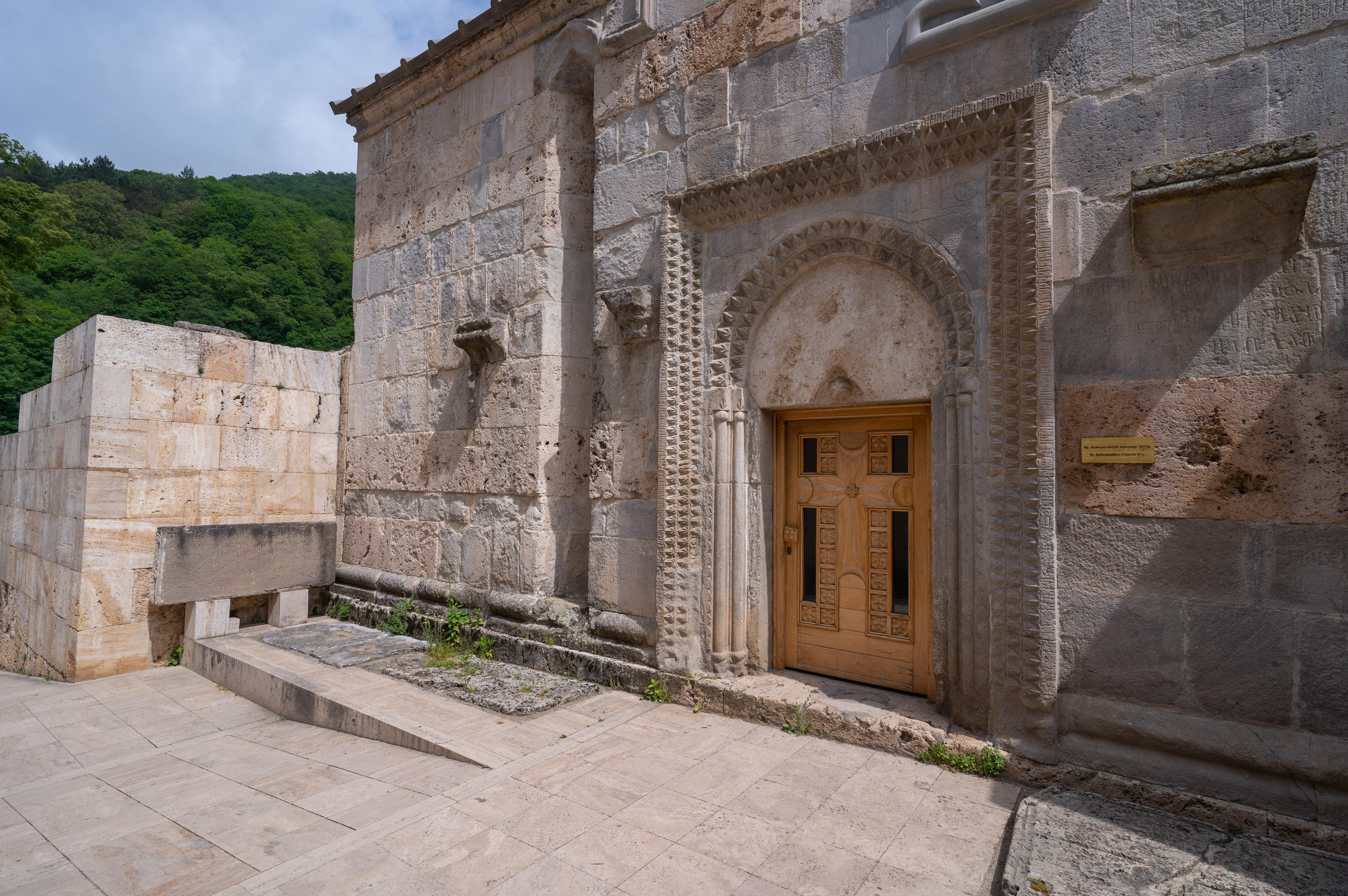
People of different faiths are imbued with the beauty and energy of this religious center. In 2005, the Arab Sheikh Sultan bin Mohammed al-Qasimi, visiting Haghartsin, said that he heard the "voice of God '' there and financed the restoration of the monastery complex by making a donation to the Armenian Foundation. Thanks to the donation, for several years (up to 2013), Haghartsin underwent large-scale restoration work. In October 2013, a new convenient road was opened. Thus, an Arab sheikh, a Muslim, helped to restore the Armenian church, which is an unprecedented case in history.
Tour to haghartsin with #gotodili
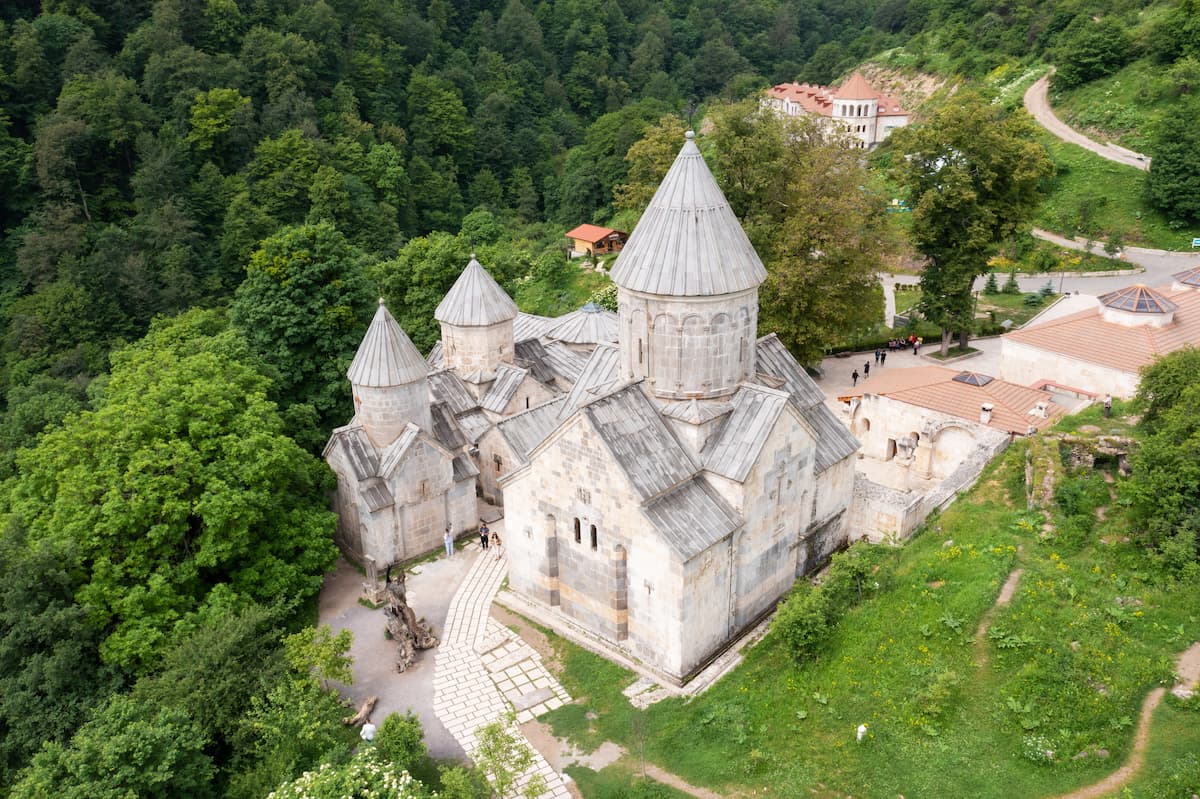
Haghartsin is one of the main beauties that cannot be ignored during a trip to Dilijan. Unforgettable impressions are guaranteed! #GoToDili conducts a tour of the surroundings of Dilijan, within which you will visit the monastery complex of Haghartsin. Our company will arrange a transfer and guide for you. You will immerse yourself in the history of the place, as well as enjoy the surrounding beauty. Hurry up to book seats for the upcoming tours!
Any other questions?
Our specialists will contact you as soon as possible




